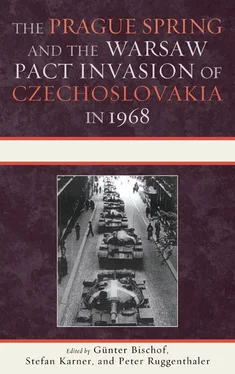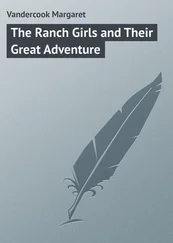The social base of this informal community grew rapidly in the postwar years. The logic of competition with the United States forced the Soviet leadership to expand higher education and to foster the growth of scientific and engineering elites. From 1928 to 1960, the number of college students in the USSR grew twelve-fold and reached 2.4 million. The number of collegeeducated professionals increased from 233,000 to 3.5 million. 28The number of scientists reached 665,000 by 1965, a six-fold growth in fifteen years. 29The students who graduated during the 1950s formed the majority of Soviet educated classes, and they joined the workforce during a period of unprecedented, Cold War–fueled job growth, the scientific-technical revolution, and Soviet social and educational programs. A huge gap separated these young cohorts, numerous, optimistic, and idealistic, from their predecessors who had been decimated by war and Stalin’s terror and whose authority was tarnished by their Faustian bargains with the regime. Gradually, some members of the young intelligentsia in Moscow and Leningrad began to look for inspiration and guidance from the remnants of the Russian intelligentsia.
The community had neither the desire nor the opportunity for political organization. The shestidesyatniki possessed only the “soft power” of cultural innovation, moral reflection, and thought-provoking intellectualism. Yet there were several trends that enhanced this “soft power.” First, there was the continuing discovery and production of the treasures of high culture. There was a long row of banned and suppressed Russian writers, poets, and artists to be discovered and “rehabilitated.” Also, there was the rising cultural tide that found its way into the Soviet Union through the breaches in the Iron Curtain made under Khrushchev: Italian neorealist films, British theater, French impressionists, Picasso, and many others. The translation and emulation of literature and art from Central Europe (Bertold Brecht, Polish films and novels, Czech essays, Hungarian poetry, and so forth) supplied the Soviet Russian intellectuals with Western elements that were conspicuously absent from their cultural and spiritual diet.
Despite Khrushchev’s crackdown on formalist poetry and art, the ferment of creativity continued to make itself felt in filmmaking through the work of Andrei Tarkovsky, Andrei Konchalovsky, and many other young directors; in the theater by companies such as Oleg Yefremov’s Contemporary Theater and Yuri Liubimov’s Taganka Theater; and in literature. Novy Mir under Tvardovsky’s leadership developed into the best literary journal of the Soviet era. The journal’s publications broke the taboos of officially sanctioned socialist realism one by one, presenting the prose of “lieutenants” about war, the “village prose” about the tragic end of Russian peasantry, and critical essays discussing democratic and revolutionary traditions before Stalinism. Tvardovsky, together with a group of dedicated publishers, literary critics, writers, and poets, attempted to use the great traditions of Russian literature to refurbish—not discard—the Soviet identity. 30One of the key elements in this attempt was the profound conviction that only a “sincere” and “truthful” exploration of the Stalinist era could provide a basis for the future existence of a Soviet internationalist and humanist society. Tvardovsky gradually came to the firmly held belief that the ill-educated bureaucracy needed the intelligentsia as a mediator between the state and the people. Only talented and sincere artists and writers would be able to help prepare the moral and spiritual ground for a future egalitarian society.
The 1960s also produced an ever-growing informal culture on the crossroads between the classical Russian high culture canon, new democratic liberal values, and unflagging beliefs in the revolutionary mythology and historical determinism. This informal culture was born below and found its most visible expression in the cult of informal songs written by bards not recognized by the cultural elite, but loved by the new educated cohorts. Songs by Bulat Okudzhava, Vladimir Vysotsky, Yuri Vizbor, Aleksandr Galich, Aleksandr Gorodnitsky, Evgenii Kliachkin, and others spread among millions with the help of private tape-recorders ( magnetizdat ). Tens of thousands of people gathered every summer in the countryside to perform, sing, and exchange cultural information.
The most influential segment of the shestidesyatniki was in the militaryindustrial complex, which employed over three million in the 1960s. Scientists, designers, and engineers were avid readers of thick literary journals and consumers of “honest” cultural products. These groups extended assistance to the “lyricists”—poets, writers, artists—when the latter got into trouble in 1963–1964. Academic and scientific institutes acted not only as “oases of free thinking,” but as cultural stages. At the same time, scientists and professionals of the military-industrial complex harbored strong technocratic illusions in that they were confident that in the future the national leadership would have to turn to them, not to the poets and writers, for guidance. The Cold War arms race boosted their prestige and confidence and so did the decline in the growth of the Soviet economy in 1959–1964. It forced the Communist Party to turn for help to the professionals. It was the high noon for the technocrats and their supporters in the state bureaucracy.
In return for their vital services, the scientists gained more intellectual autonomy than they had ever had before. Scientists in the “closed” cities and labs of the military-industrial complex had virtually uncensored access to global information. Even outside this complex, a slew of privileged scientific conglomerates also enjoyed relative academic freedom. In 1965, Akademgorodok near Novosibirsk was, as one veteran recalled, “the most liberal locale in the country,” with forty-seven academicians, eighty-five doctors of science, and over one thousand younger scientists. There was virtually no party or secret police supervision there. The intensity of intellectual discussions in the Akademgorodok, one witness recalled, resembled that at Berkeley. 31
The first post-Khrushchev years, 1965–1967, saw the peak of influence of the intellectual-professional elites on the Soviet regime. Sociologist Vladimir Shlapentokh recalled that “never in Soviet history had the officially recognized role of the intellectuals been so great.” 32In the race for strategic parity with the West, the Soviet regime could only count on scientists. Even the KGB needed the scholarly elite and their brains to deal with the challenges from the West. 33In 1962–1965, the Kremlin authorized economic discussions; central and regional authorities employed sociologists and paid for public opinion polls to learn more about social processes. Economists, mathematicians, and sociologists used the “rehabilitated” and now fashionable discipline of cybernetics to offer solutions to reverse the slowing of the Soviet economy. Pravda , Izvestiya , and other newspapers and journals published “discussion articles” on possible economic reforms. These reforms were launched with pomp and circumstance at the Party Plenum in September 1965. 34
Another trend in 1965–1967 was a growing public standoff between the post-Khrushchev leadership in the Politburo and the small group of the pro-liberalization and reform-Communist intellectuals and artists in Moscow. This standoff was triggered by the Kremlin’s decision to cancel de-Stalinization from above. Instead, the regime attempted to boost its national legitimacy by creating the cult of the Great Patriotic War. Against this ominous background, the arrest and trial of two writers, Andrei Sinyavsky and Yuli Daniel, took place. The trial was part of a campaign promoted by “hardliners” in the KGB and the Politburo in order to fight “Western influences” and “liberal rot” that had accumulated in the Moscow educated circles, as the hardliners believed, during Khrushchev’s rule. Protest against this campaign brought to life a “movement” primarily located in Moscow. Solzhenitsyn recalled that “ Samizdat gushed like a spring flood, new names joined the protests. It seemed that we would start breathing freely with one more push.” 35Historian Roy Medvedev recalled that in 1966–1967 this movement enjoyed emotional and material support among large groups of the intelligentsia, Old Bolsheviks, and even some people of the central party apparatus. Among the latter were experts in international affairs, culture, and science, recruited into the apparatus during Khrushchev’s Thaw (A. Rumyantsev, F. Burlatsky, N. Inozemtsev, O. Bogomolov, A. Bovin, G. Shakhnazarov, and A. Chernyaev, among others). Some of them became directors of think-tanks preparing international “détente” and writing speeches for Leonid Brezhnev. At the same time, they helped artists and historians who became the targets of neo-Stalinist attacks. 36There was an informal alliance between reform Communists in the apparatus and the anti-Stalinist cultural elites, including some “liberals” among them.
Читать дальше












